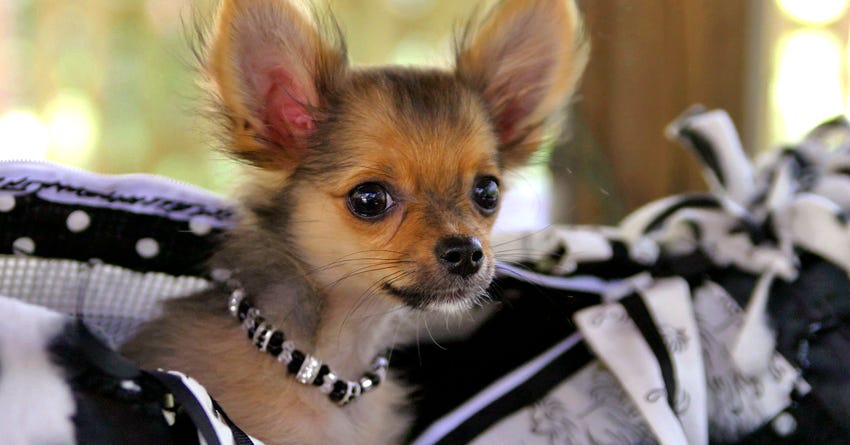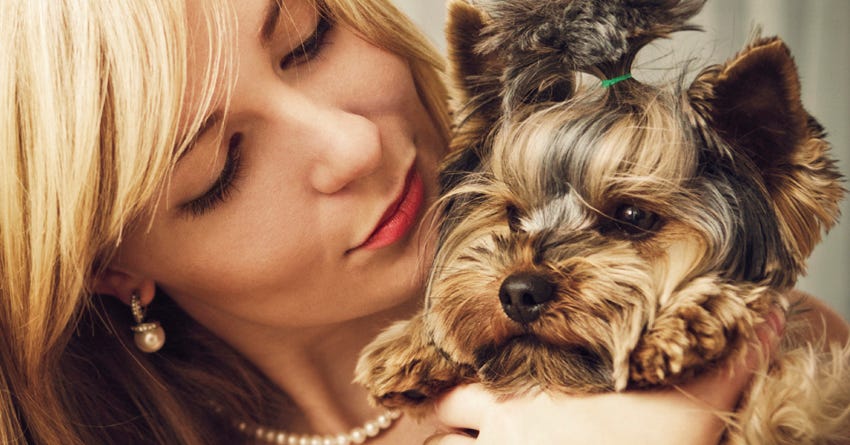6 Snippy Signs Your Dog Has Small Dog Syndrome

What is Small Dog Syndrome?
Imagine you're the personal assistant to a furry little Hollywood celebrity, 24 hours a day, seven days a week. You've got a 10 pound diva who whines and barks for attention, talks back when asked to do anything and expects to be waited on hand and paw. If a larger dog—let's say a German Shepherd—were to jump up on people, barking and snapping, insisting on being carried around, we would see this as highly undesirable behavior. People may interpret the behavior as that of an aggressive dog, and I'm pretty sure that letting this dog off-leash would be impossible. But somehow, when it comes from a dog that barely reaches our ankles, it's laughed off and seen as a minor nuisance. Two different sizes of dogs, the exact same behavior, different reactions from humans—something doesn't add up here. And it's because of us humans that this syndrome is manifested and tolerated. With the popularity of toy and designer dogs that fit neatly into a purse, you've probably already witnessed SDS first hand. ©istockphoto/anneleven
©istockphoto/annelevenSigns of Small Dog Syndrome
- Does your dog rule the roost? She barks, you jump up to do her bidding. She knows she's in charge of the house and you follow her rules. By giving in to her every demand and not correcting any bad habits, you've given her the idea that it's her way or the highway. She's a little dictator who will bully every member of the family—human or animal—until she gets what she wants. At this point, she doesn't listen to the voice of reason (that should be you). Basically, you're walking on eggshells around your dog; the household revolves around what will keep her content and quiet.
- Is she too good to walk? Why would she walk if she has you to carry her everywhere? She's so cute and small, and you're afraid she'll get hurt, so you scoop her up…and soon, she expects these travel arrangements. But even small dogs need to walk. Daily walks are great exercise for them because they are at risk of becoming overweight. Even an extra pound or two can put pressure on joints, organs and limbs, which leads to expensive medical bills, pain and suffering.
- Does she bark at every dog she passes? The size of dog doesn't matter—your precious pooch turns into a snarling beast when another dog crosses her path. But the barking is a sign of an underlining issue—that she's unsure, anxious and insecure.
- Does she growl, snap or jump on people? She could just exhibit one of these nasty habits, or all three. It's a sign of insecurity and she's compensating for her size. Again, this is another way she's showing you that she's stressed, threatened, confused, upset, intimidated, or nervous.
- Does she beg for food? Okay, a lot of dogs are guilty of this one, but your small dog takes it to the next level. She will sit, stare, whine and cry until you give her what's on your plate. And on top of that, she may start ignoring her regular food in favor of your hand outs.
- Does she pee all over the house? And this isn't just your house; it's any house she visits. The floor, the couch, the walls, the bed—nothing is safe from her piddle practices. This isn't about housetraining; it's about control and dominance. And she'll do it everywhere—except outside.


